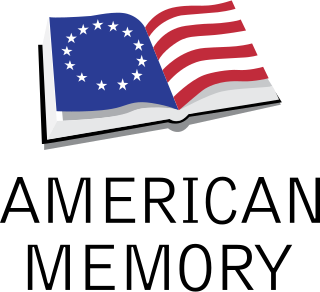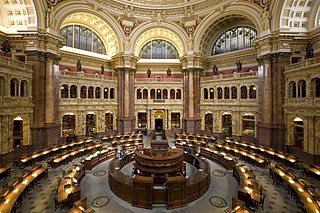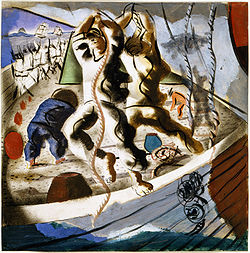Project Gutenberg (PG) is a volunteer effort to digitize and archive cultural works, as well as to "encourage the creation and distribution of eBooks." It was founded in 1971 by American writer Michael S. Hart and is the oldest digital library. Most of the items in its collection are the full texts of books or individual stories in the public domain. All files can be accessed for free under an open format layout, available on almost any computer. As of 13 February 2024, Project Gutenberg had reached 70,000 items in its collection of free eBooks.

The Internet Archive is an American nonprofit digital library founded on May 10, 1996, and chaired by free information advocate Brewster Kahle. It provides free access to collections of digitized materials including websites, software applications, music, audiovisual and print materials. The Archive also advocates for a free and open Internet. As of February 4, 2024, the Internet Archive holds more than 44 million print materials, 10.6 million videos, 1 million software programs, 15 million audio files, 4.8 million images, 255,000 concerts, and over 835 billion web pages in its Wayback Machine. Its mission is committing to provide "universal access to all knowledge".

Exchangeable image file format is a standard that specifies formats for images, sound, and ancillary tags used by digital cameras, scanners and other systems handling image and sound files recorded by digital cameras. The specification uses the following existing encoding formats with the addition of specific metadata tags: JPEG lossy coding for compressed image files, TIFF Rev. 6.0 for uncompressed image files, and RIFF WAV for audio files. It does not support JPEG 2000 or GIF encoded images.

Digitization is the process of converting information into a digital format. The result is the representation of an object, image, sound, document, or signal obtained by generating a series of numbers that describe a discrete set of points or samples. The result is called digital representation or, more specifically, a digital image, for the object, and digital form, for the signal. In modern practice, the digitized data is in the form of binary numbers, which facilitates processing by digital computers and other operations, but digitizing simply means "the conversion of analog source material into a numerical format"; the decimal or any other number system can be used instead.

Digital obsolescence is the risk of data loss because of inabilities to access digital assets, due to the hardware or software required for information retrieval being repeatedly replaced by newer devices and systems, resulting in increasingly incompatible formats. While the threat of an eventual "digital dark age" was initially met with little concern until the 1990s, modern digital preservation efforts in the information and archival fields have implemented protocols and strategies such as data migration and technical audits, while the salvage and emulation of antiquated hardware and software address digital obsolescence to limit the potential damage to long-term information access.

American Memory is an internet-based archive for public domain image resources, as well as audio, video, and archived Web content. Published by the Library of Congress, the archive launched on October 13, 1994, after $13 million was raised in private donations.
In library and archival science, digital preservation is a formal process to ensure that digital information of continuing value remains accessible and usable in the long term. It involves planning, resource allocation, and application of preservation methods and technologies, and combines policies, strategies and actions to ensure access to reformatted and "born-digital" content, regardless of the challenges of media failure and technological change. The goal of digital preservation is the accurate rendering of authenticated content over time.
The Archive of the Indigenous Languages of Latin America (AILLA) is a digital repository housed in LLILAS Benson Latin American Studies and Collections at the University of Texas at Austin. AILLA is a digital language archive dedicated to the digitization and preservation of primary data, such as field notes, texts, audio and video recordings, in or about Latin American indigenous languages. AILLA's holdings are available on the Internet and are open to the public wherever privacy and intellectual property concerns are met. AILLA has access portals in both English and Spanish; all metadata are available in both languages, as well as in indigenous languages where possible.
FFV1 is a lossless intra-frame video coding format. It can use either variable-length coding or arithmetic coding for entropy coding. FFV1 is particularly popular for its performance regarding speed and size, compared to other lossless preservation codecs, such as M-JPEG2000.

In conservation, library and archival science, preservation is a set of preventive conservation activities aimed at prolonging the life of a record, book, or object while making as few changes as possible. Preservation activities vary widely and may include monitoring the condition of items, maintaining the temperature and humidity in collection storage areas, writing a plan in case of emergencies, digitizing items, writing relevant metadata, and increasing accessibility. Preservation, in this definition, is practiced in a library or an archive by a conservator, librarian, archivist, or other professional when they perceive a collection or record is in need of maintenance.
Oral history preservation is the field that deals with the care and upkeep of oral history materials, whatever format they may be in. Oral history is a method of historical documentation, using interviews with living survivors of the time being investigated. Oral history often touches on topics scarcely touched on by written documents, and by doing so, fills in the gaps of records that make up early historical documents.
Digital artifactual value, a preservation term, is the intrinsic value of a digital object, rather than the informational content of the object. Though standards are lacking, born-digital objects and digital representations of physical objects may have a value attributed to them as artifacts.
Music librarianship is the area of librarianship that pertains to music collections and their development, cataloging, preservation and maintenance, as well as reference issues connected with musical works and music literature. Music librarians often have degrees in both music and librarianship. Music librarians deal with standard librarianship duties such as cataloging and reference, which become more complicated when music scores and recordings are involved. Therefore, music librarians generally read music and have at least a basic understanding of both music theory and music history to aid in their duties.
A file format is a standard way that information is encoded for storage in a computer file. It specifies how bits are used to encode information in a digital storage medium. File formats may be either proprietary or free.
A digital library, also called an online library, an internet library, a digital repository, a library without walls, or a digital collection, is an online database of digital objects that can include text, still images, audio, video, digital documents, or other digital media formats or a library accessible through the internet. Objects can consist of digitized content like print or photographs, as well as originally produced digital content like word processor files or social media posts. In addition to storing content, digital libraries provide means for organizing, searching, and retrieving the content contained in the collection. Digital libraries can vary immensely in size and scope, and can be maintained by individuals or organizations. The digital content may be stored locally, or accessed remotely via computer networks. These information retrieval systems are able to exchange information with each other through interoperability and sustainability.

The Library of Congress (LOC) is a research library in Washington, D.C., that serves as the library and research service of the U.S. Congress and the de facto national library of the United States. Founded in 1800, the library is the United States's oldest federal cultural institution. The library is housed in three elaborate buildings on Capitol Hill. It also maintains a conservation center in Culpeper, Virginia. The library's functions are overseen by the Librarian of Congress, and its buildings are maintained by the Architect of the Capitol. The Library of Congress is one of the largest libraries in the world. Its collections contain approximately 173 million items, and it has more than 3,000 employees. Its "collections are universal, not limited by subject, format, or national boundary, and include research materials from all parts of the world and in more than 470 languages."

Smithsonian Libraries and Archives is an institutional archives and library system comprising 21 branch libraries serving the various Smithsonian Institution museums and research centers. The Libraries and Archives serve Smithsonian Institution staff as well as the scholarly community and general public with information and reference support. Its collections number nearly 3 million volumes including 50,000 rare books and manuscripts.

The National Recording Preservation Plan is a strategic guide for the preservation of sound recordings in the United States. It was published in December 2012 by the Council on Library and Information Resources (CLIR) and the National Recording Preservation Board of the Library of Congress. The plan was written by a community of specialists, but is prominently credited to Brenda Nelson-Strauss, Alan Gevinson and Sam Brylawski

In archives, the term "audiovisual" is frequently used generically to denote materials other than written documents. Films, videos, audio recordings, pictures, and other audio and visual media are collected in audiovisual archives. A vast amount of knowledge is included in audiovisual records, which are considered cultural treasures and must be preserved for future use. Print materials would not have the same reach across various audiences as audiovisual resources.










